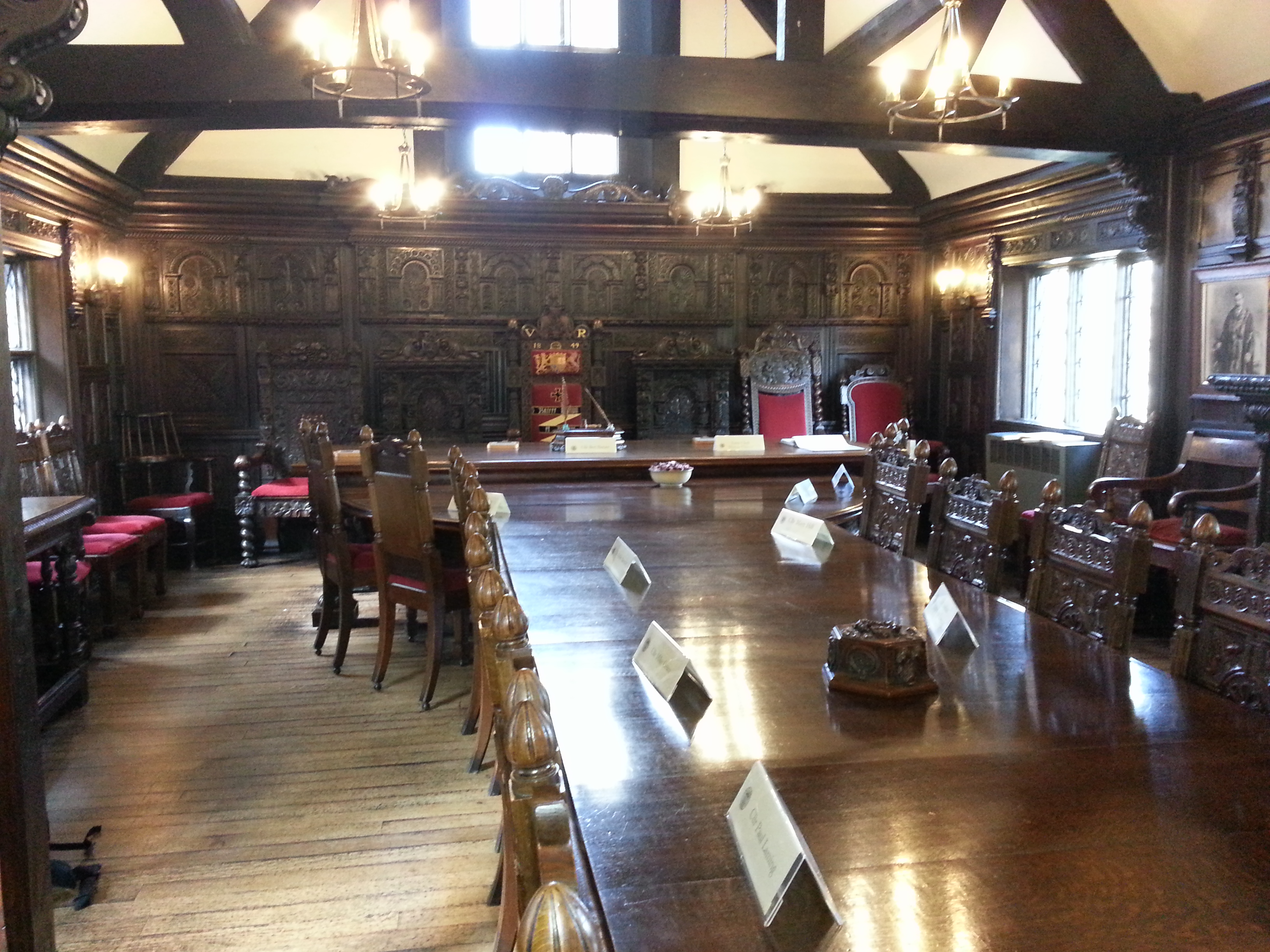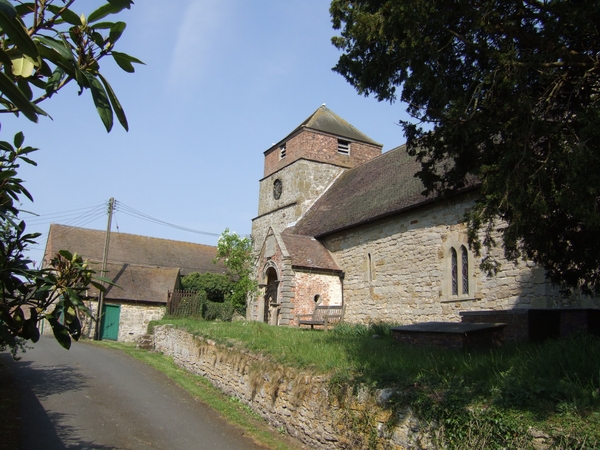|
Willey, Shropshire
Willey is a small village south west of the town of Broseley, Shropshire, England, within the civil parish of Barrow. It is made up of about 4 farms and the majority of land is owned and leased by the Weld-Forester family of Willey Hall. Willey also sports a proud cricket team like many small villages around the United Kingdom. History In the early 16th century, Willey became the property of the Weld family. John Weld, second son of John Weld of Eaton, Cheshire and his wife Joanna FitzHugh, settled in the area and became patriarch of the Willey Welds. His youngest brother was Sir Humphrey Weld (died 1610), Lord Mayor of London.''Burke's Genealogical and Heraldic History of the Landed Gentry'', Volume 2. H. Colburn, 1847. pp. 1545-6 view on lin/ref> The Welds of Shropshire were several times connected by marriage with the Whitmores of Apley Hall, Staffordshire. The village was the site of one of John Wilkinson's ironworks in the 18th century. The world's first iron boat, a ... [...More Info...] [...Related Items...] OR: [Wikipedia] [Google] [Baidu] |
Barrow, Shropshire
Barrow is a hamlet and civil parish in Shropshire, England, some 5 miles south of Telford between Ironbridge and Much Wenlock. Although Barrow itself consists of a church and just a few dwellings, the parish extends from Broseley to the eastern edge of Much Wenlock; it also includes the hamlet of Willey and Benthall. According to the 2001 census the parish had a population of 636, increasing at the 2011 Census to 680. Barrow is a short distance south of the site of a lost mediaeval village, Arlescott. The Jack Mytton Way runs through both Arlescott and Barrow. See also *Listed buildings in Barrow, Shropshire Barrow is a civil parish in Shropshire, England. It contains 28 listed buildings that are recorded in the National Heritage List for England. Of these, three are listed at Grade I, the highest of the three grades, three are at Grade&nbs ... Notes and references External links Villages in Shropshire Civil parishes in Shropshire {{Shropshire- ... [...More Info...] [...Related Items...] OR: [Wikipedia] [Google] [Baidu] |
Much Wenlock
Much Wenlock is a market town and parish in Shropshire, England, situated on the A458 road between Shrewsbury and Bridgnorth. Nearby, to the northeast, is the Ironbridge Gorge, and the new town of Telford. The civil parish includes the villages of Homer (1 mile north of the town), Wyke (2 miles northeast), Atterley (2 miles southeast), Stretton Westwood (2 miles southwest) and Bourton (3 miles southwest). The population of the civil parish, according to the 2001 census, was 2,605, increasing to 2,877 at the 2011 Census. Notable historic attractions in the town are Wenlock Priory and the Guildhall. The Wenlock Olympian Games established by William Penny Brookes in 1850 are centred in the town. Brookes is credited as a founding father of the modern Olympic Games, and one of the London 2012 Summer Olympics mascots was named Wenlock after the town. Toponym Much Wenlock is historically the chief town of the ancient borough of Wenlock. "Much" was added to distinguish it from ... [...More Info...] [...Related Items...] OR: [Wikipedia] [Google] [Baidu] |
Listed Buildings In Barrow, Shropshire
Barrow is a civil parish in Shropshire, England. It contains 28 listed buildings that are recorded in the National Heritage List for England. Of these, three are listed at Grade I, the highest of the three grades, three are at Grade II*, the middle grade, and the others are at Grade II, the lowest grade. The parish contains the settlements of Barrow, Willey, Benthall, and Linley, and is otherwise completely rural. Four of the listed buildings are churches, two of which are at Grade I, and two at Grade II*. The other Grade I listed building is a country house. The rest of the listed buildings include farmhouses and farm buildings, other houses and cottages, a row of almshouse An almshouse (also known as a bede-house, poorhouse, or hospital) was charitable housing provided to people in a particular community, especially during the medieval era. They were often targeted at the poor of a locality, at those from certain ...s, a bridge, a che ... [...More Info...] [...Related Items...] OR: [Wikipedia] [Google] [Baidu] |
National Gardens Scheme
The National Garden Scheme opens privately owned gardens in England, Northern Ireland, Wales, and the Channel Islands on selected dates for charity. It was founded in 1927 with the aim of "opening gardens of quality, character and interest to the public for charity". The scheme has raised over £60 million since it began, and normally opens thousands of gardens a year."Yellow Book" (2008). National Gardens Scheme. County organisers are responsible for vetting gardens to make sure they are of sufficient interest. (Features)(Homefront). ''''. 2002. Retrieved via |
Church Of England
The Church of England (C of E) is the established Christian church in England and the mother church of the international Anglican Communion. It traces its history to the Christian church recorded as existing in the Roman province of Britain by the 3rd century and to the 6th-century Gregorian mission to Kent led by Augustine of Canterbury. The English church renounced papal authority in 1534 when Henry VIII failed to secure a papal annulment of his marriage to Catherine of Aragon. The English Reformation accelerated under Edward VI's regents, before a brief restoration of papal authority under Queen Mary I and King Philip. The Act of Supremacy 1558 renewed the breach, and the Elizabethan Settlement charted a course enabling the English church to describe itself as both Reformed and Catholic. In the earlier phase of the English Reformation there were both Roman Catholic martyrs and radical Protestant martyrs. The later phases saw the Penal Laws punish Ro ... [...More Info...] [...Related Items...] OR: [Wikipedia] [Google] [Baidu] |
Celtic Cross
The Celtic cross is a form of Christian cross featuring a nimbus or ring that emerged in Ireland, France and Great Britain in the Early Middle Ages. A type of ringed cross, it became widespread through its use in the stone high crosses erected across the islands, especially in regions evangelized by Irish missionaries, from the ninth through the 12th centuries. A staple of Insular art, the Celtic cross is essentially a Latin cross with a nimbus surrounding the intersection of the arms and stem. Scholars have debated its exact origins, but it is related to earlier crosses featuring rings. The form gained new popularity during the Celtic Revival of the 19th century; the name "Celtic cross" is a convention dating from that time. The shape, usually decorated with interlace and other motifs from Insular art, became popular for funerary monuments and other uses, and has remained so, spreading well beyond Ireland. Early history Ringed crosses similar to older Continental f ... [...More Info...] [...Related Items...] OR: [Wikipedia] [Google] [Baidu] |
Bay (architecture)
In architecture, a bay is the space between architectural elements, or a recess or compartment. The term ''bay'' comes from Old French ''baie'', meaning an opening or hole."Bay" ''Online Etymology Dictionary''. http://www.etymonline.com/index.php?allowed_in_frame=0&search=bay&searchmode=none accessed 3/10/2014 __NOTOC__ Examples # The spaces between posts, columns, or buttresses in the length of a building, the division in the widths being called aisles. This meaning also applies to overhead vaults (between ribs), in a building using a vaulted structural system. For example, the Gothic architecture period's Chartres Cathedral has a nave (main interior space) that is '' "seven bays long." '' Similarly in timber framing a bay is the space between posts in the transverse direction of the building and aisles run longitudinally."Bay", n.3. def. 1-6 and "Bay", n.5 def 2. ''Oxford English Dictionary'' Second Edition on CD-ROM (v. 4.0) © Oxford University Press 2009 # Where there a ... [...More Info...] [...Related Items...] OR: [Wikipedia] [Google] [Baidu] |
Gable
A gable is the generally triangular portion of a wall between the edges of intersecting roof pitches. The shape of the gable and how it is detailed depends on the structural system used, which reflects climate, material availability, and aesthetic concerns. The term gable wall or gable end more commonly refers to the entire wall, including the gable and the wall below it. Some types of roof do not have a gable (for example hip roofs do not). One common type of roof with gables, the gable roof, is named after its prominent gables. A parapet made of a series of curves (Dutch gable) or horizontal steps (crow-stepped gable) may hide the diagonal lines of the roof. Gable ends of more recent buildings are often treated in the same way as the Classic pediment form. But unlike Classical structures, which operate through trabeation, the gable ends of many buildings are actually bearing-wall structures. Gable style is also used in the design of fabric structures, with varying degree ... [...More Info...] [...Related Items...] OR: [Wikipedia] [Google] [Baidu] |
Cecil Weld-Forester, 1st Baron Forester
Cecil Weld-Forester, 1st Baron Forester (baptised 7 April 1767 – 23 May 1828) was a Tory British Member of Parliament and later peer. Biography Born Cecil Forester and baptised at St Chad's Church, Shrewsbury, Editors Vicary Gibbs and H. A. Doubleday. Parish named "St Chad's, Salop" (sic), birthdate and place not given. he assumed the additional surname of Weld by Royal Licence in 1811, upon inheriting Willey Park from his cousin George Forester. He was educated at Westminster School and Christ Church, Oxford.History of Parliament article by R.G. Thorne He was elected to the for [...More Info...] [...Related Items...] OR: [Wikipedia] [Google] [Baidu] |
George Forester
George Forester (21 December 1735 – 13 July 1811) was Member of Parliament for the borough constituency of Wenlock on several occasions between 1758 and 1785. He was the only son of Brooke Forester of Dothill in Wellington and Elizabeth daughter and heir of George Weld George may refer to: People * George (given name) * George (surname) * George (singer), American-Canadian singer George Nozuka, known by the mononym George * George Washington, First President of the United States * George W. Bush, 43rd Presid ... of Willey Park. He died unmarried in 1811 having devised his estates to his cousin Cecil Forester, from 1811 Weld-Forester, and from 1820 1st Baron Forester. References * *''Burkes Peerage'' (1939 edition) 1735 births 1811 deaths Members of the Parliament of Great Britain for English constituencies British MPs 1754–1761 British MPs 1768–1774 British MPs 1774–1780 British MPs 1780–1784 British MPs 1784–1790 People from Tel ... [...More Info...] [...Related Items...] OR: [Wikipedia] [Google] [Baidu] |
Brooke Forester
Brooke Forester (7 February 1717 – 8 July 1774) was the long-serving Member of Parliament for the borough constituency of Wenlock from 1739 and 1768. He was the eldest son of William Forester of Dothill in Wellington, Shropshire (now Telford) and Catherine, daughter and heir of William Brooke of Clerkenwell. Forester married twice. His first marriage was on 4 May 1734 to Elizabeth daughter and sole heiress of George Weld of Willey Park. Their only surviving son was George Forester George Forester (21 December 1735 – 13 July 1811) was Member of Parliament for the borough constituency of Wenlock on several occasions between 1758 and 1785. He was the only son of Brooke Forester of Dothill in Wellington and Elizabeth dau .... Forester's father and grandfather, as well as his brother Cecil Forester and cousin Cecil Forester, later Weld-Forester and Baron Forester, all represented Wenlock. References * *''Burkes Peerage'' (1939 edition). 1717 births 1774 ... [...More Info...] [...Related Items...] OR: [Wikipedia] [Google] [Baidu] |






